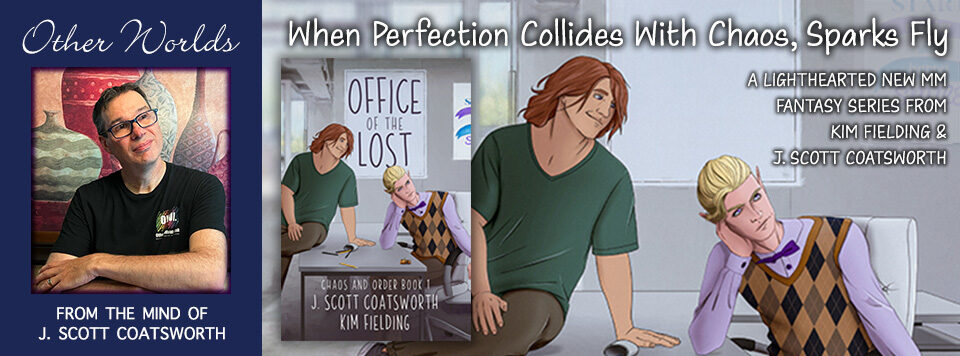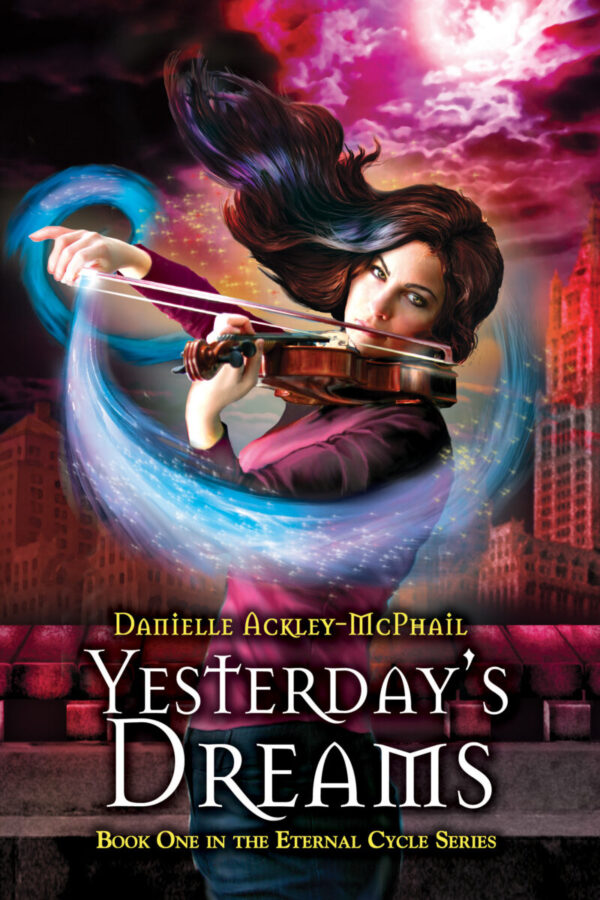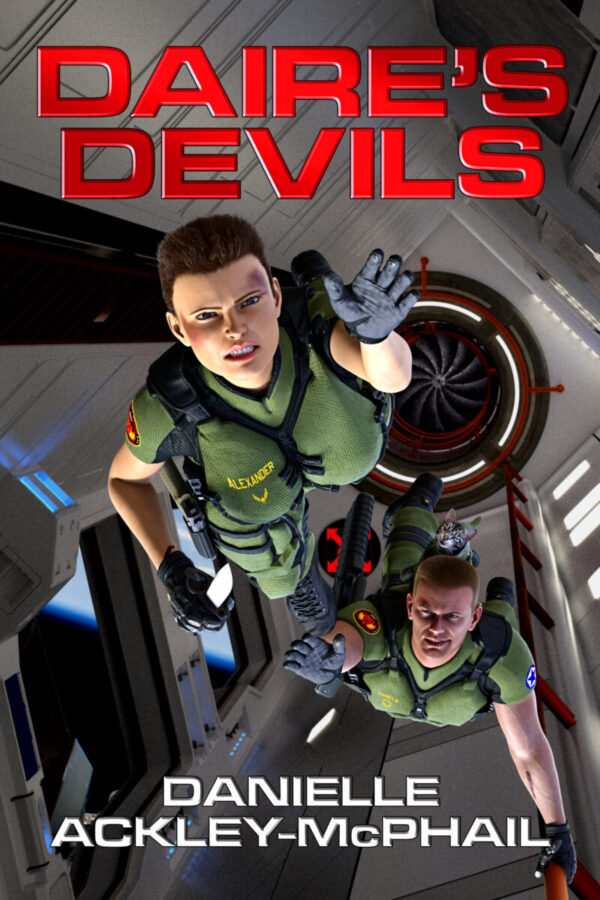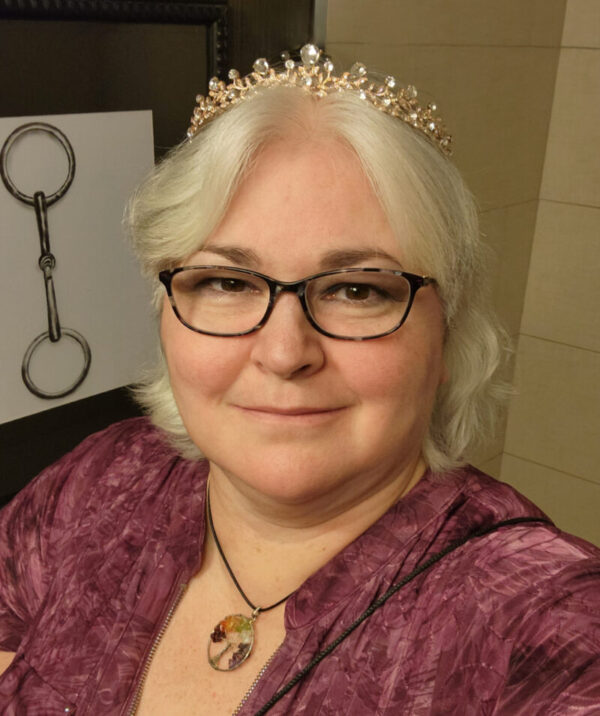
Welcome to my weekly Author Spotlight. I’ve asked a bunch of my author friends to answer a set of interview questions, and to share their latest work.
Today: Award-winning author, editor, and publisher Danielle Ackley-McPhail has worked both sides of the publishing industry for longer than she cares to admit. In 2014 she joined forces with Mike McPhail and Greg Schauer to form eSpec Books (www.especbooks.com).
Her published works include eight novels, Yesterday’s Dreams, Tomorrow’s Memories, Today’s Promise, The Halfling’s Court, The Redcaps’ Queen, Daire’s Devils, The Play of Light, and Baba Ali and the Clockwork Djinn, written with Day Al-Mohamed. She is also the author of the solo collections Eternal Wanderings, A Legacy of Stars, Consigned to the Sea, Flash in the Can, Transcendence, Between Darkness and Light, and the non-fiction writers’ guides The Literary Handyman, More Tips from the Handyman, and LH: Build-A-Book Workshop. She is the senior editor of the Bad-Ass Faeries anthology series, Gaslight & Grimm, Side of Good/Side of Evil, After Punk, and Footprints in the Stars. Her short stories are included in numerous other anthologies and collections. She is a full member of the Science Fiction and Fantasy Writers Association.
In addition to her literary acclaim, she crafts and sells original costume horns under the moniker The Hornie Lady Custom Costume Horns, and homemade flavor-infused candied ginger under the brand of Ginger KICK! at literary conventions, on commission, and wholesale.
Danielle lives in New Jersey with husband and fellow writer, Mike McPhail and four extremely spoiled cats.
Thanks so much, Danielle, for joining me!
J. Scott Coatsworth: When did you know you wanted to write, and when did you discover that you were good at it?
Danielle Ackley-McPhail: It was never a conscious choice. I was always an avid reader and I did well with English in school, so it was more a natural progression. When I was younger, I always wanted more, even when the book was done so while I was waiting to fall asleep, I would continue the story in my head (with me in it, of course!). That pretty much set me up for this torturous path. I have to tell the stories and hope they speak to people. Hope to get the word out. My style and diction have always been strong just out of saturation. I read a LOT. So much that my mom actually had to yell at me to put the book down. Once they started teaching us to write fiction and poetry in school, that was it. I aced the assignments, and wrote independent of them as well. At first it was mostly poetry because it was quick and easy to write, but now I am almost exclusively fiction, with some non-fiction thrown in.
JSC: What was your first published work? Tell me a little about it.
DAM: My first novel was Yesterday’s Dreams. It was rough and clueless, but it had passion and engaging characters. It never should have seen the light of day in its original form, but the editor who signed it had to leave the company before the book was produced, so I am lucky it was released at all. It is about Irish elves in New York City fighting evil demigods. When I started writing it, I was a volunteer for an America On Line writing board where you could post bits of your work and other commented on it. Sometimes encouraging, other times constructive.
The idea came out of an online chat with other volunteers from the site, in particular, my supervisor, who had many interesting vocations, including as a pawnbroker. A lot more went into the story, about a first-generation Irish American girl who had to give up—or at least postpone—a promising career as a concert violinist to help her family as her father fights a battle with cancer. There is a lot more to the book, and there must have been something there that people liked, as rough as the original version was, because it was picked up two other times by different publishers. Currently it is in its fourth and final iteration, having been revised each time it was rereleased.
I love that little book, and the two others that make up the trilogy. It was a way to explore my Irish heritage, my love of mythology, and my passion for writing. And if nothing else, it is the book that set me on this journey, eight novels, twelve short story collections, and four non-fiction books later, not to mention stories appearing in around sixty-five anthologies over the years.
JSC: Have you ever taken a trip to research a story? Tell me about it.
DAM: Well… I haven’t taken a trip for research, but after my first two novels were published (as in each time) I took a trip to Ireland and visited the different places I wrote about in the books. It was fun to see how details I couldn’t have known even with research dovetailed with what I wrote. One of the most significant ones was that I have my elves turn to literal dust when they die, on the spot, and those with them collect the dust in bags to return them to their homeland. When I visited Newgrange I learned of the Irish burial practices where everyone who died throughout the year was cremated and the ashes put in little bags. Those bags were left on basically one of three altars inside the mound at Newgrange and left there until the winter solstice, when the light of the sun and the architecture of the mound perfectly align for the light to flood the inside of the mound, which was believed to free the souls to move on to the afterlife. After the solstice, the bags were interred into a group cairn. The interesting fact here is that Newgrange is said to be the resting place of Dagda and Boinn, two gods of the Tuatha de Danaan… the Irish elves. Now, throughout recorded history there are all kinds of traditions that are common folk mimicking their deities, so I was delighted that this aspect of my fiction was validated by these facts that I did not learn until I went to Eire.
JSC: Do you read your book reviews? How do you deal with bad or good ones?
DAM: Oh, I do. Every one I can find. I used to get upset by them, but even the unfavorable ones often taught me something about my writing. By paying attention to what the person did and did not like I could—where I agreed—police myself to make sure I didn’t continue to make the mistakes that impacted the reader’s enjoyment. Of course, many times it is just personal preference or pet peeves, and there is no hope to counteract that. Everyone has different reading preferences and none of us are going to satisfy every reader. I’m just glad when people take the effort to post a review. Bonus if it’s positive! Besides, if the reviewer can string words together decently themselves, I always mine them for blurbs to use in my promotions.
JSC: Why did you choose to write in your particular field or genre? If you write more than one, how do you balance them?
DAM: I have read voraciously since I was a child. My mother took me to get my first library card walked me inside and said “As many as you can carry.” Then she let me loose. No supervision, no restriction. Because of that my interests have always varied and I had a pretty solid grounding on what distinguished the different genres, what tropes were expected. In addition to that, when I became an author, I was determined not to be pigeonholed, so I embraced every opportunity that came my way, regardless of genre. That’s part of the reason I have so many anthologies to my credit. My primary genres are urban fantasy, military science fiction, and steampunk, with the occasional dabble into horror. When I’m writing, for the most part, I don’t necessarily restrict myself regarding genre (unless I’m writing on spec). Instead, I tell a story and that dictates what the result is in the end. I will say, where I start isn’t always where I finish. Of course, no matter what genre I am writing some aspect of mythology ends up creeping into the background.
JSC: Do your books spring to life from a character first or an idea?
DAM – Oh! This is a fun one. Each story or book is different. Sometimes I discover the character first and tell their story, other times I get an idea or even just a line and things spiral from there. I once wrote a story inspired by three drops of water on a counter. Another time I started an entire novel based on the concept that we are all vampires before we are born. I let inspiration come as it may, but in nearly every adventure it is bits and piece of many things that come together to make a whole.
JSC: How did you choose the topic for this book?
DAM: Long, long ago, when I first met my husband, author, and editor Mike McPhail, he was developing his own role-playing-game system, The Alliance Archives Martial Role Playing System. It was a military science fiction universe. Nothing has become of the game (so far) but when he became the editor of the Defending the Future anthology series, I had been playing his game for years beside other players who had actual military experience and so it was natural for me to draw on those experiences for my stories, for the background if nothing else. I enjoyed the characters so much that every time I had a story assignment I returned to the same unit and carried their adventures through to the next collection. By the time the series had eight or so anthologies in it, I had the core of a book that I just needed to weave together and complete. That book became Daire’s Devils.
One of the things I really love about the characters is their authenticity. It isn’t all about combat and conflict, it is about the coping mechanisms of the common soldier. The humor, the pranks, the rituals. My novel has a main character, but the story is about the whole unit. To be honest, I didn’t know where I was going with this when I started. I had so much content and I needed to find a compelling arc that would carry me all the way through a novel-length fiction. Since the individual short stories I was using as the seed for the novel came out of all different projects, some with their own theme, that wasn’t always easy, but I got there in the end.
JSC: Who did your cover, and what was the design process like?
DAM: Mike McPhail, in addition to being an author and an editor, is also a graphic designer with his own firm, McP Digital Graphics. It was difficult planning out this cover because I didn’t want it to be just like every other military sf out there, with either an exploding ship, a bunch of soldiers charging a position, or an emblem with some generic characters in the background. So we worked together to design the characters true to the book, then we tried to set an image both engaging and different from the typical, taking into account the challenges and restrictions that would be involve in fighting in an enclosed space, with no gravity, and the risk of decompression if you damage the hull.
I like our cover, and we generated what we set out to do, but I do have to admit that there have been mixed responses to it. But then, that is going to happen no matter what you do.
Tell us one thing about them that we don’t learn from the book, the secret in their past.
JSC: Who has been your favorite character to write and why?
DAM: To be honest? Spec. I know… you don’t know who Spec is, but I can tell you, he is everyone’s favorite, especially mine. In most of my longer works there is always a comic relief character. That isn’t all they do, but that is first and foremost their objective. Maybe it is a child, or an animal, or a fae that likes to be an animal. Look for them. They’re always there, and they always steal the show. Heck, they aren’t even always nice, but they are effective.
In Daire’s Devils, that is Spec. He is a cat. In fact, he is my cat and if I didn’t already love him to bits, I certainly did after writing this book.
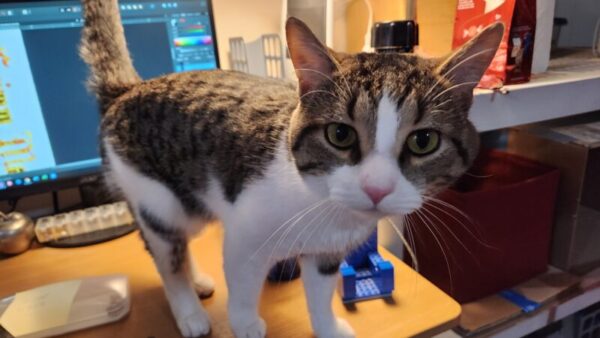
See, one of the world-building aspects my husband had in place were genetically modified cats used as combat scouts. They could communicate through neural synapses, they’re hands were more like that of a racoon, and they could even talk, he called them Parr scouts, and in the novel Spec is just earning his stripes, as it were. Part of what make him so endearing is that I incorporate actual behaviors and characteristics from my own Spec into the story—for example, the fact that he makes no sound when he meows, which is both adorable and at times funny, especially when he puts his whole body into it—and in an action-packed, fast-paced novel, those moments of light-heartedness definitely give the reader a necessary break. Not that Spec doesn’t get his moments to shine. Little dude is quite the bad-ass when the situation calls for it.
JSC: What are you working on now, and what’s coming out next? Tell us about it!
DAM: Well, the compact answer is steampunk, but I am rarely as simple as that! I am working on four books, currently. Fortunately, as editor and contributor on three of them, but the first is all me… a steampunk collection of mostly my previously published stories, but with a couple of new ones. I don’t have a title or a cover for that one yet, but I am close.
The other three are original steampunk anthologies that I am compiling.
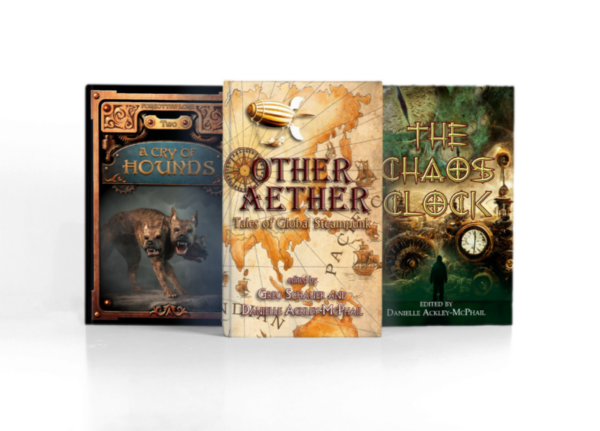
The first is in conjunction with the Tell-Tale Steampunk Festival (www.telltalesteamunk.com) and it is called A Cry of Hounds. This is actually the second anthology we’ve worked with them on. At the festival they have a literary theme and a literary scavenger hunt. The scavenger hunt is based on our anthology, which is based on the festival’s theme for that year. A Cry of Hounds is original steampunk inspired by the works of Arthur Conan Doyle, and during the Festival attendees will have to search for the hounds hidden around the even, each one based on one of the stories from the anthology, and they win a prize if they collect all of the names of the hounds in the book.
The next anthology is Other Aether: Tales of Global Steampunk, which is steampunk loosely inspired by Jules Verne’s Around the World in 80 Days, in that each story is writing in a location other than Victorian England and examines how steampunk would develop in that culture and region.
And the last anthology is The Chaos Clock: Tales of Cosmic Aether. This is a mash-up of cosmic horror and steampunk, so, inspired by HP Lovecraft. The only requirements here were for the authors to include cosmic horror, steampunk, and some representation or form of a clock.
We are aiming to have all four books available for The Tell-Tale Steampunk Festival, though the official release dates will likely be later in the year, so we can submit the books for review to venues that require it a certain number of weeks in advance of the release date.
And now for Danielle’s new book: Daire’s Devils:
Give the Enemy Hell!
At the ass-end of the galaxy, Allied Forces—including the 142nd Mobile Special Ops Team, better known as Daire’s Devils—stand ready to defend the contested colony planet Demeter from military invasion and corporate exploitation.
But when the ranks are infiltrated by those determined to secure the top-secret designs of AeroCom’s new prototype flagship, the Cromwell, the newest member of the Devils, Corporal Katrion Alexander, finds herself facing off against an unexpected menace, synthetic operatives indistinguishable from living beings.
She and the Devils must neutralize this new threat, but how when the enemy wears a trusted face?
